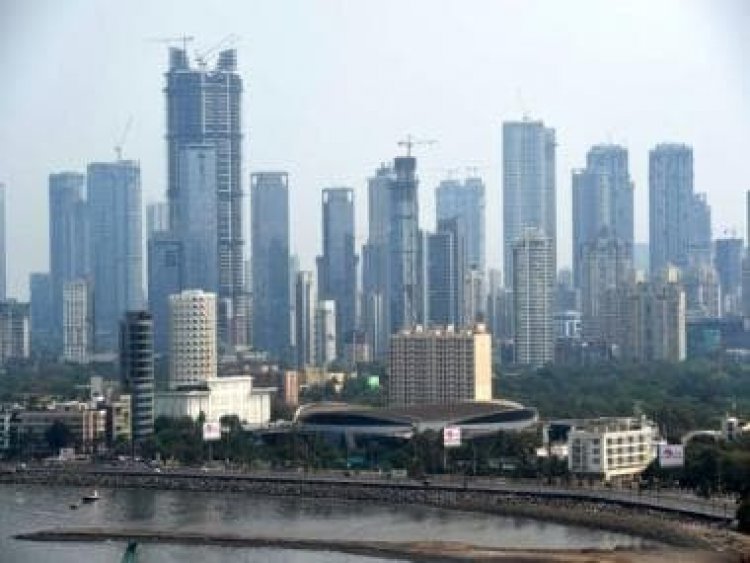Richie Rich Club: How much money does one need to join India’s richest 1%?
Richie Rich Club: How much money does one need to join India’s richest 1%?

Amitabh Bachchan once uttered in a movie, ‘Mere paas bungla hai, gaadi hai, bank balance hai.’ It was meant to be an indicator of how rich he was. But that’s just being rich. What about being uber-rich and a part of the top ‘one per cent’?
Global real estate consultancy Knight Frank has the answer for you. The firm in its ‘Wealth Report 2023’ has shown just how much does a person need to be a part of the ‘Richie Rich’ club across the world.
The report states that Monaco tops the list – if you want to join the Mediterranean principality’s richest of the rich, one will need a whopping fortune of $12.4 million (Rs 102 crore).
What about India? What else does the report reveal? We analyse the data and give you the answers.
Entry into 1 per cent club
While Monaco has the highest entry point into the ‘one per cent club’, the next two countries on the list by Knight Frank are Switzerland and Australia. In Switzerland, one needs $6.6 million (Rs 54 crore) while in Australia, it’s $5.5 million (Rs 45 crore).
In Asia, the highest entry point is in Singapore, needing $3.5 million (Rs 28 crore). India has been placed on the 22nd spot with an entry point of $175,000 (Rs 1.44 crore). India was placed before South Africa, the Philippines and Kenya.

Incidentally, the entry point in Monaco is more than 200 times that of Kenya – which clearly highlights the widening income inequality gap between countries.
In Latin America, Brazil has the highest threshold of $430,000 (approx Rs 3.5 crore) whereas the threshold for the United States was $5.1 million (approx Rs 42 crore). In the Middle East, the highest was the United Arab Emirates with a $1.6 million (Rs 13 crore) threshold.
The gap between rich and poor countries has widened in the recent past owing to the COVID-19 pandemic as well as a surge in global inflation. “Growing inequality globally could see a greater focus on this group – particularly in the sighs for greater taxation on assets and even emissions,” Flora Harley, a partner in Knight Frank’s research team said in a statement.
Also read: Why India is becoming the new darling of luxury brands across the globe
India’s rise in billionaires
The Knight Frank report also found that the number of high-net-worth individuals (HNIs) – those whose asset value is at $1 million or more – will grow at a massive 108 per cent in the next five years to 1.7 million. In 2022, the number of HNIs in the country was 797,714.
The report also showed that India’s ultra-high-net-worth individuals UHNWIs – those having a net worth over $30 million – was to grow by 58.4 per cent. The report said that the number of UHNWIs was to increase from 12,069 in 2022 to 19,119 and by 2027. India’s billionaire count is also expected to rise to 195 from the current 161 billionaires.

This trend is in sharp contrast to the scenario across the world. The Knight Frank report has stated that the global UHNI population fell by 3.8 per cent last year. Additionally, the number of billionaires globally also fell by 5 per cent to 2,629.
India’s ‘bright’ economy
The news comes as the United Nations called India a “bright spot” in the world economy and projected the economic growth will expand by 5.8 per cent in 2023 and 6.7 per cent in 2024 (calendar year basis), supported by resilient domestic demand.
Hamid Rashid, chief of the Global Economic Monitoring Branch, Economic Analysis and Policy Division, UN Department of Economic and Social Affairs, told news agency PTI, “India remains a bright spot. Our projection for India hasn’t changed since January and we see many positives, including the inflation has come down significantly.” We are pretty confident with our forecast right now for the year.”
India’s own common man has also given a thumbs-up to the economy. A recent study by Ipsos IndiaBus shows that as many as 53 per cent Indians are happy with their economic and financial conditions, while 50 per cent are happy with the situation of the country.
This could be attributed to a decline in the annual Wholesale Price Index (WPI) as well as a fall in inflation. India’s WPI-based inflation declined to a 34-month low of (-) 0.92 per cent in April. The country’s consumer food price index has also eased to 4.70 per cent in April from 5.66 per cent in the previous month.
With inputs from agencies
Read all the Latest News, Trending News, Cricket News, Bollywood News,
India News and Entertainment News here. Follow us on Facebook, Twitter and Instagram.
What's Your Reaction?


























































